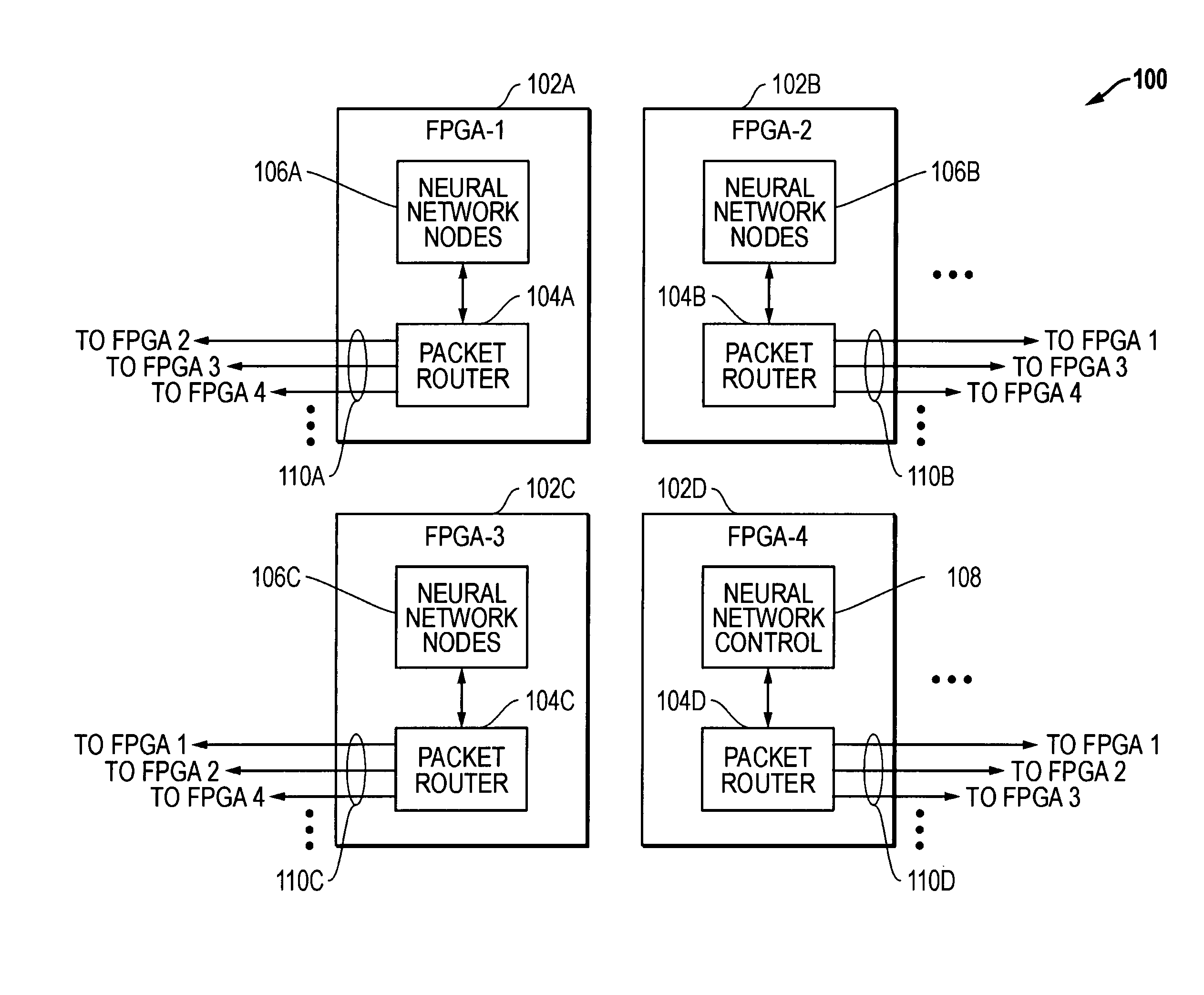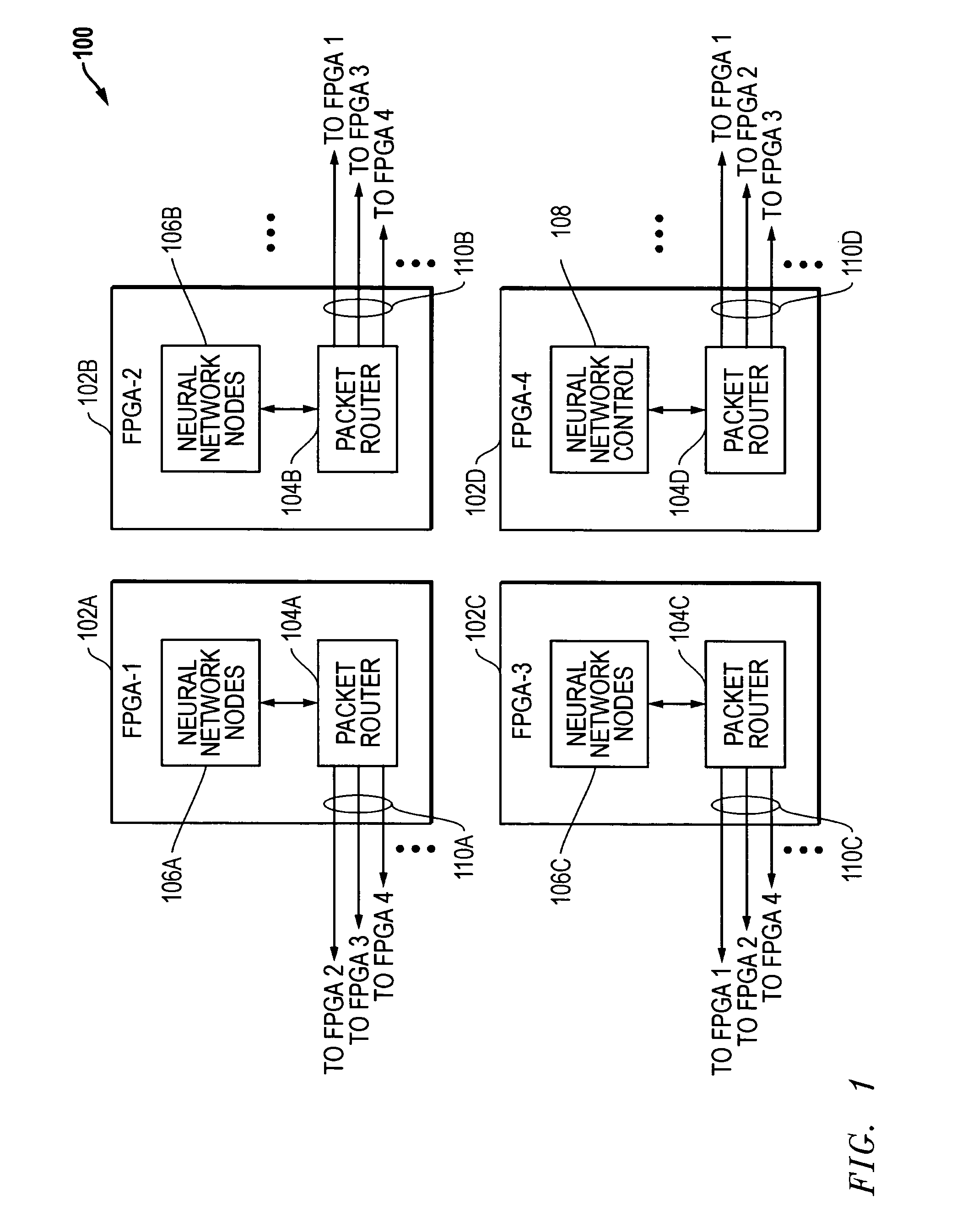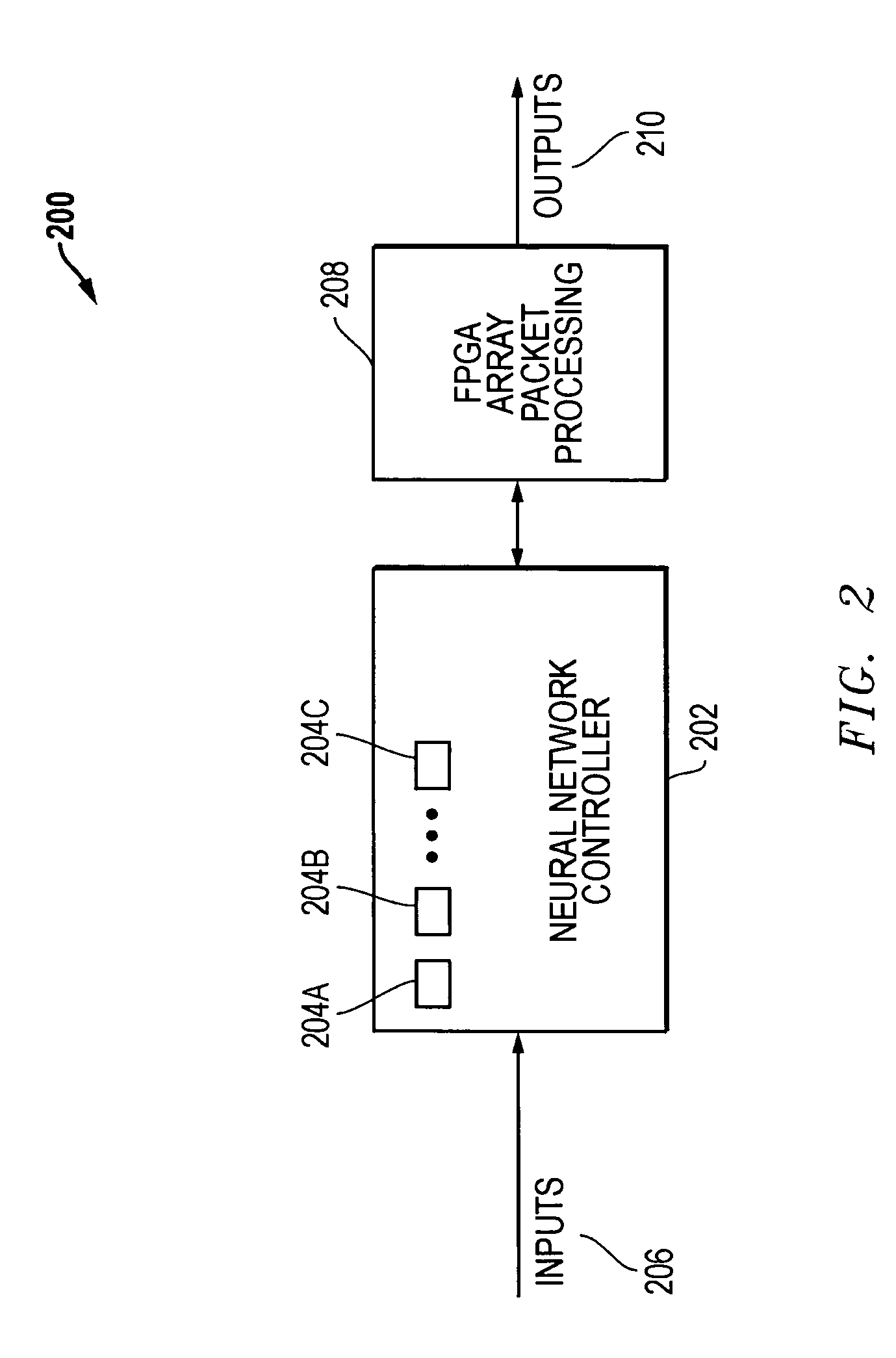Reconfigurable neural network systems and methods utilizing FPGAs having packet routers
a neural network and packet router technology, applied in the field of neural network decision nodes, can solve the problems of wasting resources, unable to perform the overall function unable to handle as complex a design, so as to achieve intelligent and dynamic operation of the neural network, high reconfigurability and advantageous effects
- Summary
- Abstract
- Description
- Claims
- Application Information
AI Technical Summary
Benefits of technology
Problems solved by technology
Method used
Image
Examples
Embodiment Construction
[0012]Systems and methods are disclosed for forming neural networks using FPGAs (field programmable gate array) and packet routing. The neural networks are highly reconfigurable in that neural network nodes communicate to each other using dynamic packet routing rather then fixed node interconnections. As discussed herein, implementing a neural network using FPGAs and packet routing allows for an advantageous, highly reconfigurable neural network.
[0013]FIG. 1 shows a diagram of an FPGA array connected to form a neural network 100. A plurality of FPGAs 102A (FPGA-1), 102B (FPGA-2), 102C (FPGA-3), 102D (FPGA-4), . . . are interconnected using direct connections 110A, 110B, 110C, 110D, . . . , such as high-speed serial connections. It is noted that any number of FPGAs could be interconnected to form an FPGA array in implementing a neural network as disclosed herein. As depicted, each FPGA has a connection to each other FPGA. For example, FPGA 102A (FPGA-1) includes connections 110A prov...
PUM
 Login to View More
Login to View More Abstract
Description
Claims
Application Information
 Login to View More
Login to View More - R&D
- Intellectual Property
- Life Sciences
- Materials
- Tech Scout
- Unparalleled Data Quality
- Higher Quality Content
- 60% Fewer Hallucinations
Browse by: Latest US Patents, China's latest patents, Technical Efficacy Thesaurus, Application Domain, Technology Topic, Popular Technical Reports.
© 2025 PatSnap. All rights reserved.Legal|Privacy policy|Modern Slavery Act Transparency Statement|Sitemap|About US| Contact US: help@patsnap.com



